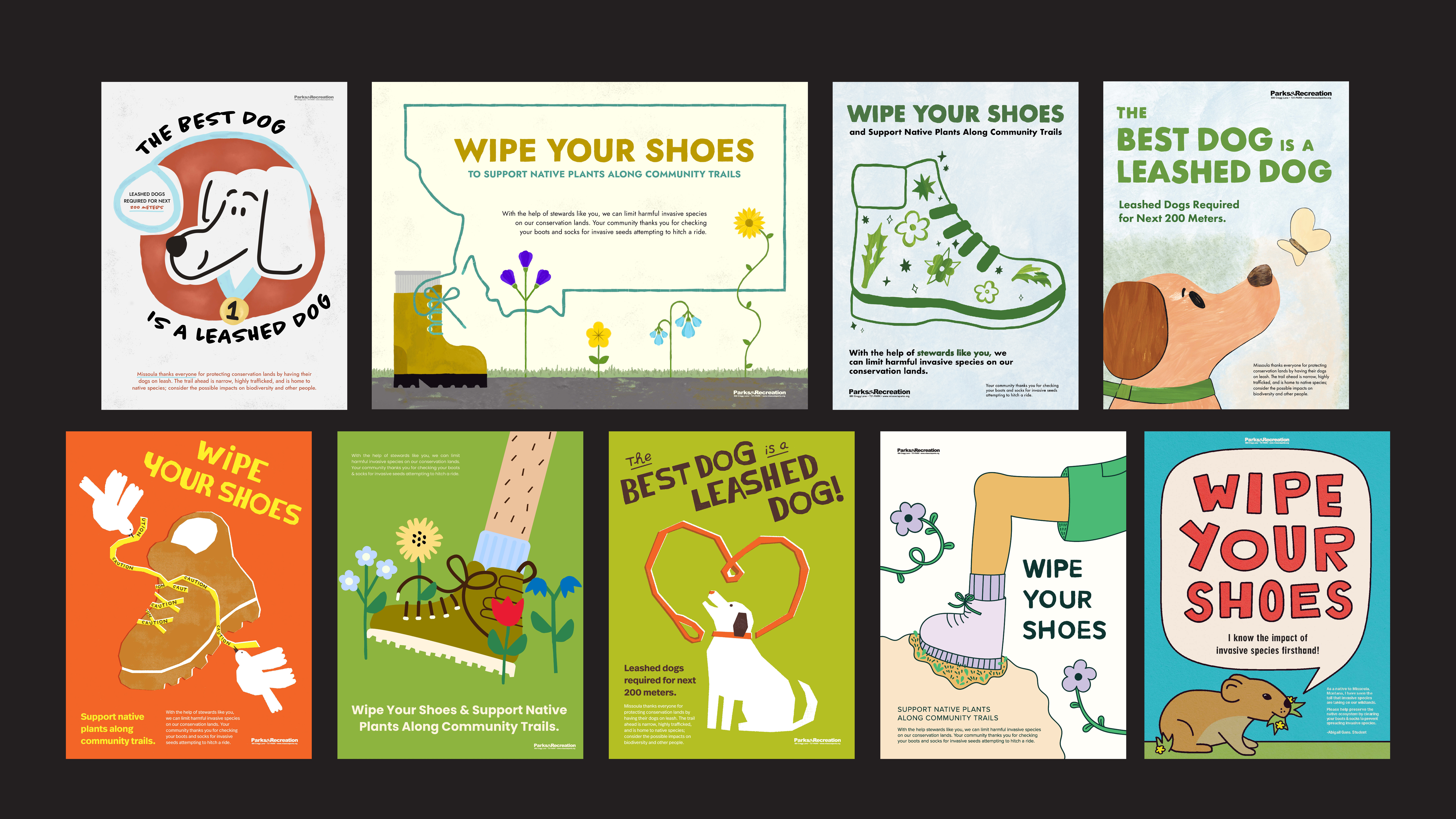Challenge
Park managers face persistent challenges in influencing visitor behavior, including reducing the spread of invasive plant species and ensuring dogs are kept on-leash. While persuasive messaging strategies have been studied extensively, the role of graphic design in capturing visitor attention and motivating behavioral change remains underexplored. This study sought to determine whether graphic design elements could enhance the effectiveness of signage in a park setting.

 Signage and messaging for the treatments were designed by students at the University of Kansas and University of Montana using MURAL, a online collaboration tool.
Signage and messaging for the treatments were designed by students at the University of Kansas and University of Montana using MURAL, a online collaboration tool.
Approach
The study used an experimental design featuring six unique signage treatments deployed at a popular trailhead in Missoula, MT.
These signs targeted two issues:
Treatments incorporated diverse graphic design strategies, including high color contrast, large scale typography, and "typography as image." Researchers observed visitor attention and behavior to assess each design's effectiveness in meeting management goals.
The study used an experimental design featuring six unique signage treatments deployed at a popular trailhead in Missoula, MT.
These signs targeted two issues:
- Encouraging shoe-cleaning to limit the spread of invasive weeds
- Promoting compliance with leash regulations for dogs.
Treatments incorporated diverse graphic design strategies, including high color contrast, large scale typography, and "typography as image." Researchers observed visitor attention and behavior to assess each design's effectiveness in meeting management goals.




Findings
Signs with bold graphic design elements (e.g., high contrast and integrated typography) were the most effective in capturing attention and influencing behavior for both issues. Administrative-style signs emphasizing authority also captured attention but were less effective in altering behavior. Successful designs engaged visitors through a combination of visual appeal and clear messaging.
- Successfully capturing the attention of visitors (even just a glance) increased their likelihood of using the shoe brush by over 85x.
- The most successful signage treatment increased leash compliance by 33% compared to the traditional agency signage.
Findings
Attention is Key: Capturing visitor attention increases the likelihood of behavioral change, especially when visitors take time to process the sign’s message.
Balance Matters: Effective signs blend authority with creativity, leveraging both administrative cues and compelling design features.
Design Techniques Influence Behavior: Graphic design elements, such as "typography as image" and strategic use of color, can drive behavior change by making messages more engaging and memorable.

CONSERVATION COMMUNICATION COLLABORATIVE
